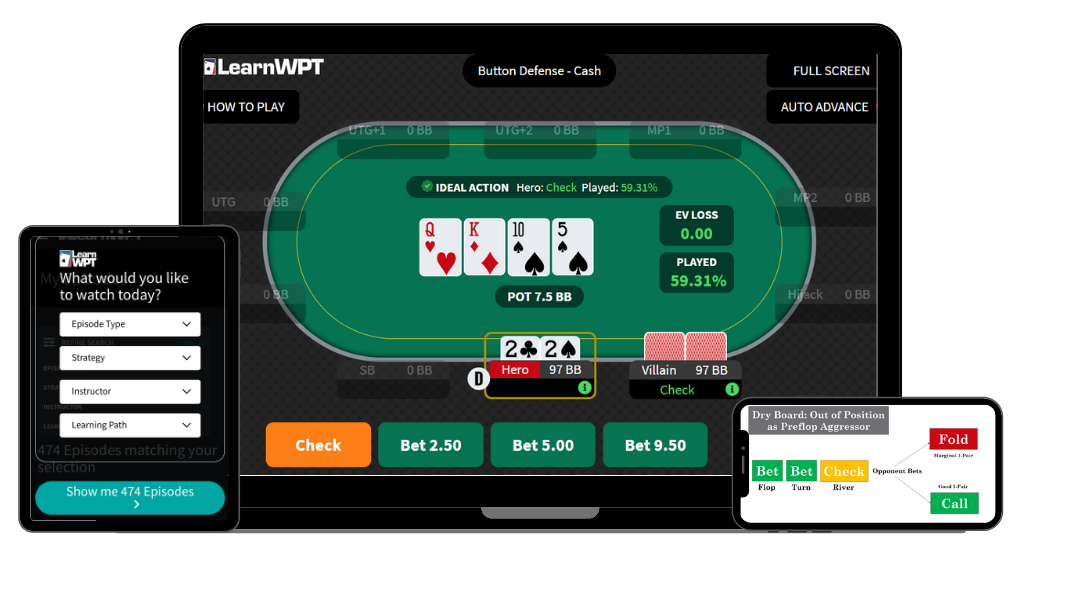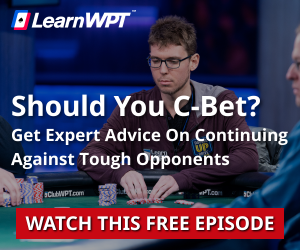PKO Poker Strategy Guide For Playing the partypoker US Network Online Series!
Your friends at partypoker US Network are back with another exciting poker tournament series in Michigan, New Jersey and Pennsylvania this October.
We know this time of year is usually full of ghosts, goblins and candy and we assure you that there are no tricks involved - just exciting poker tournaments with big guaranteed prize pools.
The action starts in New Jersey on October 17th featuring a week long online poker tournament festival with a $535 buy-in $50,000 Guaranteed Progressive Knockout Main Event on Sunday October 24th at 5pm Eastern. Not familiar with PKO poker strategy? We’ve got you covered with a quick strategy primer that will haunt your opponents so be sure to check it out below.
Michigan and Pennsylvania join the party with their very own Online Series schedules starting on Sunday October 24th and ending on Sunday, October 31st with a $1060 buy-in $50,000 Guaranteed 8-Max Main Event. Make sure you check out our tips for playing on the big stage below so you don’t get bewitched by bad play.
So no matter where you choose to play this October, treat yourself to a sweet schedule featuring $50,000 Guaranteed Main Events and enjoy the exciting online poker tournament series from partypoker US network. Who knows, maybe you’ll be one of the 3 Musketeers who emerge victorious as an Online Series Main Event Champion (okay, we know that one was a stretch, please don’t Boooo us 👻).
For more information about the October Online Series poker tournament schedules click below:
As a treat to you, For The Player is here with expert tournament strategy and helpful tips to help you have more fun and carve up the competition this October.
What Is A PKO Tournament?
- PKO (Progressive Knockout) tournaments are fun, unique events where a dynamic bounty is placed on each player
- As you knock out other players, typically you are paid 50% of their bounty and the other 50% is added to your total bounty
- Unlike regular knockout tournaments the value of the bounties can grow
- If you are the victor in a PKO Tourney you win in multiple ways:
- Win the amount in the general prize pool for 1st place
- Win the bounties you earned over the course of the event
- Keep the full amount of the bounty that is on your head
Do I Need a Separate Strategy for PKOs?
Yes! The strategy for playing PKOs is very different from regular bounty tournament strategy.
Click below to view an in-depth Strategy Episode from LearnWPT Instructor Nick Binger to learn valuable math shortcuts and strategy tips to improve your play in PKO events.
Remembers these tips when playing in a PKO Tournament:
- Because bounty values change based on each player's number of knockouts, some players are worth much more than others to knock out
- Players are incentivized to widen their ranges and go after opponents when they have a high bounty value
- Starting PKO Tournaments on time and avoiding late registration is critical to maximize your chances of winning the most bounties
- It's often profitable to call with any 2 cards in PKO Tournaments when your opponent's bounty value is high
- This style of tournament has become extremely popular over the last year because it encourages so much action!
- Download the PKO Equity Reduction Reference Guide for an easy and quick way to determine your equity in PKO Tournaments
Online Tournament Play with Vanessa Selbst
LearnWPT Instructor and all time poker great Vanessa Selbst is here to break down key lessons from the $535 Online Series PKO Main Event in New Jersey.
If the idea of getting aggressive at the poker table gives you nightmares, this is your chance to learn how to keep opponents on their heels and win more pots.
Study Like the Pros with LuckyChewy and Katie Stone
LearnWPT Instructor and partypoker US Network Team Pro Katie Stone is no stranger to the high pressure and big money decisions that come with making big buy-in final tables.
In this Strategy Episode, Katie joins LearnWPT Instructor Andrew “LuckyChewy” Lichtenberger to show you how professional poker players rely on each other for advice as they break down hands from Katie’s 2nd place in the $1060 Online Series Main Event.
Train → Play → Think Like a Pro!
Click below to play a free Sample pack from the WPT GTO Trainer to brush up on your play from out of position with a 30BB stack vs a tough opponent.
Keep these tips in mind when playing the hands:
- The Cutoff’s calling range will be more narrow given stack sizes
- Against weaker opponents you can c-bet at a high frequency with smaller bet sizing
- You will c-bet less often on coordinated boards vs tough players
- Use a larger c-bet sizing on scattered or dry boards
- Balance your flop checking range to include some big hands
- Don’t go on autopilot and bet simply because you were the initial raiser, focus on board texture
- Although the Cutoff’s range is capped to not include big hands like AA/KK, they will have an equity advantage on most flops
In a Tournament with 30 big blind stacks, you open raise to 2BBs from Middle Position, and the Cutoff player calls.
Do your best to choose the ideal action at every point. Your goal is to keep "EV Loss" in the green and close to 0.
P.S. After you’ve finished playing the hands click the LEARN NOW button for simple strategy on how to play this scenario profitably.
Working Together For The Player
partypoker US Network and LearnWPT have joined forces to bring you FREE poker strategy and opportunities for training experiences!
For The Player is designed for all skill levels. Our goal is to help you learn poker strategy and have more fun playing the game you love.
Subscribe below to receive FREE poker strategy content, weekly quizzes, downloadable tools, and more.
Good luck and good playing!
-LearnWPT
*Players may participate in the Online Series through either BorgataPoker.com, BetMGMPoker.com or NJ.PartyPoker.com, and must physically be in New Jersey, Pennsylvania, or Michigan to register and play in the series. Customers must be 21 years of age or older to play. See official rules for complete details.
Have Questions about LearnWPT? Send an email to our Support Team at [email protected] or click the red CONTACT US button and they will be happy to help!
TRAIN - PLAY - THINK
LIKE A PRO


































